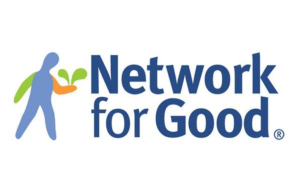Close your eyes and imagine this scenario: A new donor gives to your organization. This becomes the first step on a long journey filled with rewarding experiences that inspire the donor to give again and again. Over the years, their relationship with your organization and commitment to your mission only grows deeper.
This sounds like every fundraiser’s dream, right? It’s a dream because it’s certainly not a reality — yet. If it were reality, the nonprofit industry wouldn’t have a back-to-back decline in donors in the each of the past two calendar years, as reported by the Fundraising Effectiveness Project.
There is a path toward this vision that is forming, through the use of first-party data to deliver enhanced personalization. For-profit retailers and service providers have blazed the trail and now it’s up to everyone in the nonprofit space to follow.
The concept was discussed during the session “First Party Data Experiences: Advance Your Digital Now” at the Bridge To Integrated Marketing And Fundraising Conference in National Harbor, Maryland. Presenters were Lianne Raices of RKD Group and Melody Conley or Susan G. Komen.
Before you can tackle the fun stuff and let your innovation run wild, be sure you address the fundamentals of collecting and leveraging first-party data.
If you haven’t done so already, the first essential is setting up a system to collect the right information and store it properly. Nonprofits from coast to coast are making lots of progress here, knocking down the siloes between channels and storing all their data in one place.
Once you connect your data, here are a few additional steps you should take:
- Run a full audit of your marketing and fundraising efforts to determine what you’re doing now and where there’s room for improvement. Fix any accuracy issues you encounter.
- Create a data governance guidebook. This will create a standard set of policies for data entry and maintenance to avoid any future inconsistencies — even with employee turnover.
- Determine which data attributes and events you will benefit from collecting.
- Tag traffic from all channels with consistent naming conventions. Consider tagging campaigns, sources, mediums, content and audience.
As your strategies become more sophisticated, explore how you can activate the data you are collecting to create more automated experiences that will feel personal to your constituents. More complex platforms can fire up location-based content about how your organization helps in local communities, or fire a pop-up based on behaviors taken since a user’s last site visit, such as reminding them of an abandoned donation form, etc.
The use of first-party data and personalization will help you strengthen your relationships with donors and inspire them to continue supporting your mission. You’ve seen the success that for-profit companies have had in this area. Now, it’s your turn.











